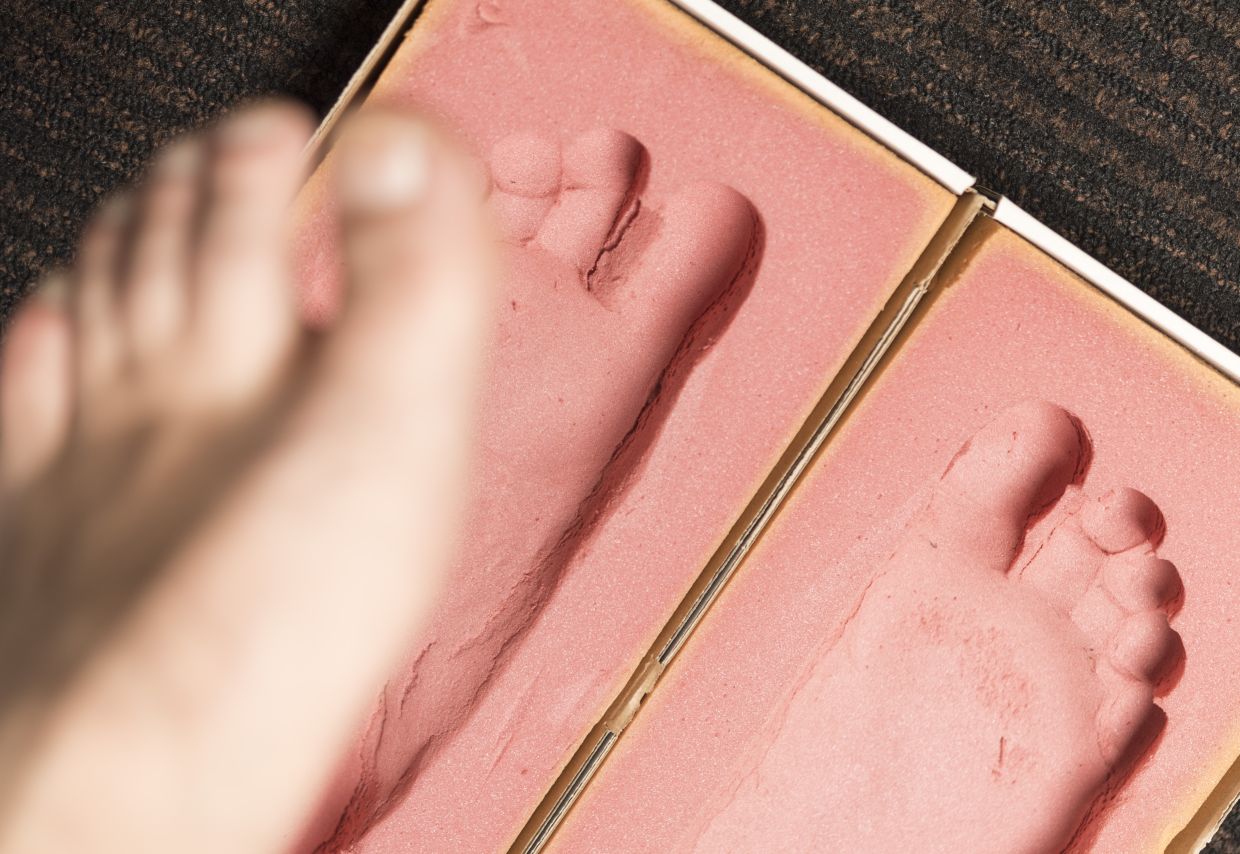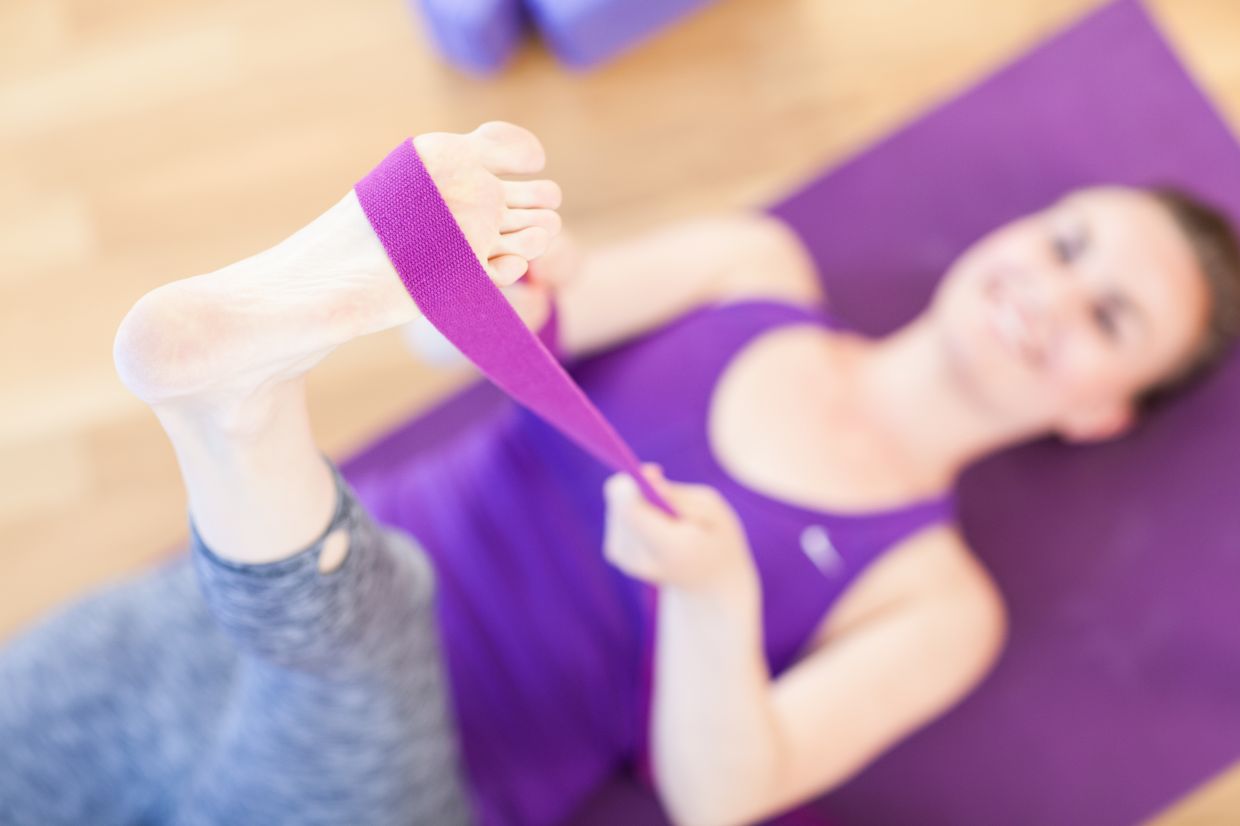Heel pain is something that affects many of us as we get older. It's typically blamed on a so-called heel spur, and yet plantar fasciitis can also be the culprit. — Photo: dpa
MANY people’s day literally gets off on the wrong foot: A sharp pain shoots through their heel. “Heel spur” is often their self-diagnosis, but the culprit can be – or be due to – a related condition that’s a very common cause of heel pain, namely plantar fasciitis.
“If you looked only at the bones of the foot, you’d think it must be flat,” says orthopaedist Dr Achim Bitschnau. “That it’s not and can act as a shock absorber of sorts is due in part to the plantar fascia,” the thick band of tissue that runs between the heel and ball of the foot and forms its arch.
If the plantar fascia is overused or overstretched, it can become inflamed and cause the body to respond to the stress and irritation by building extra bone tissue, explains Bitschnau. An x-ray will show this spur-shaped bony outgrowth from the heel bone.
While you might blame the heel spur for your heel pain, which can be particularly bad right after you get up in the morning, it’s actually caused by the inflammation of plantar fasciitis. In Germany, one in 10 adults between the ages of 40 and 60 is estimated to have it.
“Risk factors include obesity, shortening of the Achilles tendon, foot deformities such as flat feet or high arches, repetitive high-impact activity and shoes giving poor support,” says Dr Georgi Wassilew, head of the Clinic and Outpatient Clinic for Orthopaedics and Orthopaedic Surgery at Greifswald University Hospital in Germany.
It’s unclear why some people have a painfully inflamed plantar fascia while many others develop a heel spur but have no symptoms. Although it may be comforting to know that plantar fasciitis often goes away on its on, you shouldn’t count on it.
Seek help
For relief from the heel pain, it’s advisable to see an orthopaedist. He or she will typically prescribe shoe inserts as an initial treatment. “They support the longitudinal arch of the foot and have a small notch with soft material under the heel to relieve pressure on the inflamed area,” Bitschnau says.
Pain relievers can help as well, since “they’re anti-inflammatory and can positively impact the plantar fasciitis,” remarks Wassilew. He adds, however, that “treatment with medications isn’t a standalone therapy and should definitely be conducted with other therapeutic measures.”
One established and often successful measure is shockwave therapy, in which mechanical high-energy sound waves are directed at the area of heel pain to stimulate healing. Its effectiveness has been scientifically proven, but it still isn’t quite clear exactly how it works. “The inflamed tissue is probably activated,” surmises Wassilew.
Another option that has proven to be effective is low-dose radiation therapy, which is said to kill the inflammatory cells. It’s usually considered if shockwave therapy fails to bring the desired results.
Surgery is a seldom-used option for a couple of reasons. First, the other therapies are often successful. And second, it leaves scar tissue, which can lead to further problems.
All in all, plantar fasciitis sufferers have cause for optimism, according to Wassilew: “With the prevalent therapies, more than 90% of the heel pain disappears in the first six to 12 months.”
If you have heel pain, you should go easy on your feet, for example by taking a break from jogging. It’s also a good idea to lose excess weight and get yourself well-cushioned shoes with thick soles and good arch support.
There are also exercises you can do to prevent muscle shortening in your calves, and thereby take pressure off your plantar fascia.
“Stand on the balls of your feet on the edge of a stair-step and stretch your calf muscles downward. Do this three times a day for five minutes each,” recommends Bitschnau.
Home remedies
What about home remedies? If you let on in your circle of acquaintances that you have a heel spur and/or plantar fasciitis, there’s a good chance you’ll be told about something that helped the mother of a friend or cousin, for instance.
Footbaths in apple cider vinegar are often mentioned, along with marmot ointment, quark wraps and magnesium.
“There’s no medical reason not to try them, even if scientific proof of their efficacy is generally lacking,” Bitschnau says. “It’s always good when patients address their health problem and actively seek a solution.”
Not for nothing have home remedies become established. Marmot ointment, for example, has a high concentration of natural cortisone, which is why it’s credited with having an anti-inflammatory effect. – dpa/Francoise Hauser




